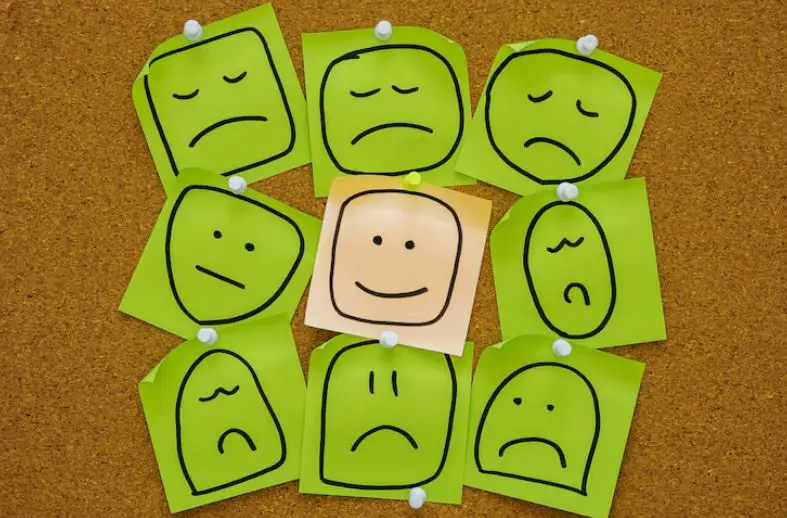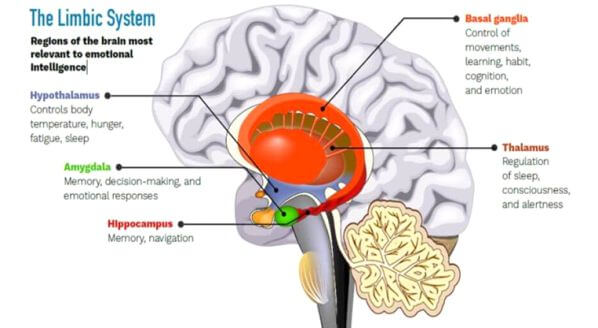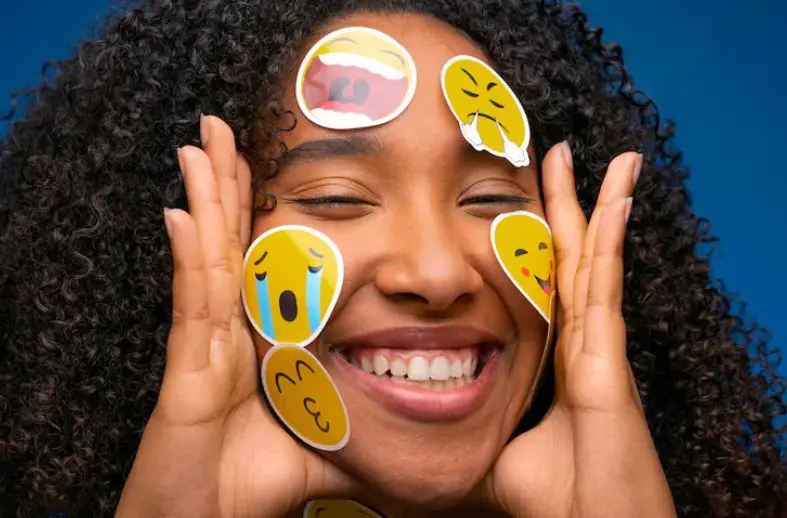Last updated on November 19th, 2025 at 08:34 pm
Emotions move your thoughts, guide your reactions, and influence your choices, creating a powerful link between what you feel, how you speak, and how you connect.
You feel emotions every day: joy when things go well, frustration when they don’t, and a mix of everything in between.
But have you ever stopped to ask why you feel what you feel or where those feelings come from?
This guide takes you into the heart of emotions, what they are, what they do, and why they matter in the conduct of your daily life.
You’ll learn how these instinctive reactions shape your choices, influence your relationships, and impact your well-being.
It’s not just science, it’s personal. You’ll see how your emotional patterns work and how to make sense of them with clarity.
If you’ve ever felt overwhelmed, misunderstood, or just curious about your inner world, this page gives you a clear path forward.
It’s time to understand your feelings better so you can respond instead of react.
Table of Contents
- What Are Emotions?
- Emotions, Feelings, and Moods: Are They the Same?
- The Role of Emotions in Shaping Perception, Behavior, and Identity
- Ralph Waldo Emerson’s View on Emotions
- The Science of Emotions
- Types of Emotions
- Types of Emotions
- Categories of Emotions
- Examples of Emotions
- The Emotional Spectrum
- Emotional Development Across the Lifespan
- Practical Applications of Emotion Understanding
- Emotions in the Digital Age
- Emotional Expression and Communication
- Emotional Regulation
- Emotions and Mental Health
- Emotions and Relationships
- Emotions in Decision-Making and Behavior
- Cultural Dimensions of Emotions
- The Role of Emotions in Creativity and Performance
- Emotional Awareness Practices
- Common Myths About Emotions
- Practical Tools for Everyday Emotional Mastery
- The Fluid Nature of Emotions and How They Shift with Awareness
- Emotional Intelligence and Self-Awareness
- Conclusion
- Frequently Asked Questions
What Are Emotions?
Emotions are your body and mind’s natural response to experiences, thoughts, and events. They create feelings like happiness, anger, fear, or sadness and help you quickly understand what’s happening around or inside you.
These instinctive feelings are not random; they’re signals that guide your behavior, decisions, and relationships.

They come with physical reactions like a racing heart or a tight chest, and mental reactions like thoughts or urges.
While some feel pleasant and others feel uncomfortable, each one serves a purpose: to alert, protect, or connect you to what matters.
Emotions, Feelings, and Moods: Are They the Same?
You’ve heard people use emotions, feelings, and moods like they mean the same thing. But they don’t.
Here’s how they differ and why the difference matters to you.
Emotions, feelings, and moods are closely related but not interchangeable.
Emotions: As we have described in the definition, emotions are brief, intense responses to a specific trigger, like fear when you hear a loud noise.
Feelings: Feelings are the personal experience of those emotions, shaped by your thoughts and beliefs, like feeling unsafe after the fear has passed.
Moods: Moods, on the other hand, last longer and may not have a clear cause, like waking up irritable for no reason.
Understanding these differences helps you name what you’re going through more accurately.
Instead of saying you’re “feeling bad,” you can recognize if you’re sad, anxious, or simply in a low mood.
Clear labels lead to better emotional control and healthier responses.
Related Posts
What Is Self-awareness? Development, Types, And Examples
Emotional Intelligence (EQ) vs. Intelligence Quotient (IQ)
What Are the Signs of Low Emotional Intelligence?
Empathy vs Sympathy vs Compassion vs Pity
How Emotional Awareness Sharpens Your Non-Verbal Skills
How Emotions Shape Thoughts and Behaviours
15 Phrases That Make You Emotionally Intelligent
The Role of Emotions in Shaping Perception, Behavior, and Identity

Emotions play a key role in how you see the world, respond to it, and understand yourself.
When you’re happy, everything feels more open and possible; your perception becomes more positive.
When you’re angry or afraid, your view narrows, and you focus on threats or problems.
They also shape your behavior. They push you to act, like avoiding danger when afraid or seeking comfort when sad.
In the long run, the sensations you experience most often can influence your daily habits and choices.
These repeated emotional patterns help form your identity.
If you regularly feel calm or confident, you begin to see yourself that way.
More on how emotions shape thoughts and behaviors.
Ralph Waldo Emerson’s View on Emotions
Ralph Waldo Emerson saw emotions as powerful forces that connect you to your truth.
He believed that your feelings reveal what you truly value, not what society tells you to value.

According to Emerson, when you trust your instinctive reactions, you live with more honesty and purpose.
He didn’t view these sensations as weaknesses to control but as guides to follow.
If something stirs you deeply, pay attention. That reaction points to your inner voice.
Emerson’s ideas remind you to stop ignoring your feelings to please others.
Instead of looking outward for direction, look inward. Your emotions carry meaning.
They show you what matters, what moves you, and what’s worth your time.
For Emerson, feeling deeply was a form of wisdom.
Related: Tips For Emotional Management In The Workplace
The Science of Emotions

You feel emotional responses every day, but have you ever wondered what’s happening inside you when they rise?
The science behind them gives clear answers rooted in brain and body processes.
What Happens in the Brain and Body When We Experience Emotions
When you feel an emotion, your body and brain work together in real time.
Your brain detects a trigger, like a loud sound or a kind gesture, and sends signals through your nervous system.
Your heart rate may change, your breathing might shift, and your muscles can tense up or relax.
These physical changes prepare your body to act.
At the same time, your brain assigns meaning to what’s happening, shaping the emotion you feel.
This process happens fast, often before you even think about it, giving your emotions speed and impact.
Key Roles of the Limbic System, Neurotransmitters, and Hormones
Your limbic system is the emotional center of your brain.
It includes parts like the amygdala and hippocampus, which process emotional memories and reactions.
When you face a threat or feel joy, the amygdala activates, triggering a chain reaction.
Neurotransmitters like dopamine and serotonin carry emotional signals, affecting how you feel in the moment.
Hormones like cortisol and adrenaline kick in during stress, influencing your mood and behavior.
Together, these systems work like a control center, helping you respond to your environment quickly.
Understanding these roles gives you insight into why emotions feel so physical and why they can be hard to ignore.
Related: How Emotional Power Is Harnessed
How Emotions Help Humans Survive and Adapt
Emotions are not just reactions; they serve a purpose.
Fear helps you avoid danger, while love and trust keep you connected to others.
These responses helped your ancestors survive, and they still guide your behavior today.
Sadness can signal loss, pushing you to seek comfort. Anger alerts you to unfair treatment, pushing you to act.
Emotions drive decision-making, shape communication, and help you respond to challenges.
Without them, you’d miss the cues that help you stay safe and build relationships.
They are part of how you’ve learned to adapt and stay alive in a changing world.
The Interaction Between Thought and Emotion in Shaping Our Experiences

Thought and emotion constantly work together. You feel something, and your brain starts interpreting it.
If someone ignores your message, you might feel hurt and then start thinking,
Did I do something wrong? Those thoughts can make the sensation stronger or shift it entirely.
Your beliefs, memories, and mental habits all influence how you process what you feel.
In return, your emotions color your thoughts, making you more optimistic, anxious, or alert.
This back-and-forth shapes your view of the world.
When you understand this link, you can catch unhelpful thought-emotion loops and choose better responses.
Types of Emotions

Types of Emotions
You experience many reactions every day, each guiding how you think, act, and respond to the world.
While emotional experiences are complex, scientists have identified several core types that appear universally across humans.
Recognizing these types helps you understand your inner responses and improve self-awareness.
Basic Emotions
Core emotions are instinctive and appear naturally in everyone.
Joy, sadness, anger, fear, surprise, and disgust are primary examples.
They serve survival functions and shape your immediate reactions.
For instance, fear alerts you to danger, while joy encourages connection.
Noticing these emotions in yourself and others allows you to respond thoughtfully rather than react impulsively.
Complex Emotions
These emerge when basic emotional experiences combine or develop over time.
Love, guilt, pride, shame, jealousy, and gratitude are examples.
Complex emotions are shaped by experience, reflection, and social context.
They help you navigate relationships, express values, and communicate effectively.
Awareness of these feelings enhances emotional intelligence and decision-making.
Positive and Negative Emotions
Emotional experiences can be broadly grouped by how they make you feel.
Positive emotions like joy, gratitude, and pride motivate action and build connection.
Negative emotions like anger, sadness, or fear signal challenges and unmet needs.
Recognizing their role allows you to address problems constructively and strengthen relationships.
Categories of Emotions

Understanding how these experiences are categorized helps you make sense of your inner life.
Categories show the source, intensity, or context of your feelings and can guide personal growth and communication.
Primary vs Secondary Emotions
Primary emotions are immediate, instinctual reactions such as fear or happiness.
Secondary emotions emerge when you reflect on these initial reactions, like guilt after anger or pride after achievement.
This distinction helps you recognize instinctive reactions versus those shaped by thought or experience.
Social and Learned Emotions
Many emotions develop through culture, upbringing, or repeated experiences.
Shame, admiration, loyalty, or embarrassment often reflect social expectations.
Knowing which feelings are socially learned helps you distinguish between your authentic responses and conditioned reactions.
Dimensional Categories
Psychologists also classify emotions by valence and arousal.
Valence measures whether a feeling is pleasant or unpleasant, while arousal measures intensity.
Calm joy and excitement both feel positive, but the intensity differs.
This framework helps you track moods, manage responses, and communicate more clearly.
Examples of Emotions

At the heart of emotional experience are six universally recognized core emotions that form the foundation for all others.
These basic feelings serve critical functions in human survival and communication.
Joy
Joy is a positive emotional response to favorable experiences, such as success, love, or meaningful connection.
It promotes bonding, resilience, and well-being, reinforcing behaviors that support personal and social growth.
Sadness
Sadness often arises from loss, disappointment, or empathy. While it’s uncomfortable, it plays a vital role in helping us process grief, seek support, and reflect on our experiences for future growth.
Anger
Anger is a powerful response to perceived injustice or threat. It can motivate change, assert boundaries, and fuel resilience, but unmanaged anger may lead to conflict and destructive outcomes.
Fear
Fear is a protective emotion triggered by perceived danger.
It heightens our senses and readies the body for survival, but can become overwhelming or irrational when not aligned with actual risk.
Disgust
Disgust is a defensive response to things perceived as harmful or repulsive.
It helps us avoid contamination or moral violations, and while it protects us, it can also reinforce social bias.
Surprise
Surprise is a brief emotional reaction to unexpected events.
It helps reorient attention and can transition into other emotions like joy, fear, or confusion, depending on how the event is interpreted.
Related: 10 Powerful Emotions Used in Persuasion
Beyond basic emotions lie more layered feelings shaped by cognition, culture, and experience.
These complex emotions are vital to understanding human relationships, morality, and personal development.
Guilt
Guilt arises when we believe we’ve done something wrong.
It encourages moral behavior and reconciliation, but can become unhealthy when persistent or disconnected from actual wrongdoing.
Shame
Shame is a deeply internalized emotion that makes us feel flawed or unworthy.
Unlike guilt, it focuses on self-perception rather than behavior and can hinder self-esteem and vulnerability if not addressed.
Jealousy
Jealousy often stems from fear of loss or insecurity in relationships. While common, it can damage trust if unmanaged.
Healthy communication and self-awareness can transform it into a path for growth.
Awe
Awe is an emotional experience triggered by something vast or beyond comprehension, such as nature, art, or spirituality.
It expands our perspective and fosters a sense of connection or wonder.
Pride
Pride reflects personal achievement or alignment with values.
It can be constructive, enhancing self-worth and motivation, but excessive pride may lead to arrogance or disconnection from others.
The Emotional Spectrum
You experience a full range of emotions every day, from gentle waves to intense surges.
These emotional shifts influence how you act, respond, and connect with those around you.
Noticing mild and strong states helps you respond with clarity instead of reacting impulsively, building steadiness and resilience.
Emotions also carry value, guiding you toward comfort or signaling needs through pleasant or unpleasant states.
Pleasant feelings support calm thinking and satisfaction, while uncomfortable ones highlight areas requiring attention.
Tools like Plutchik’s wheel illustrate how basic emotions, joy, trust, fear, surprise, sadness, disgust, anger, and anticipation blend into complex experiences.
By mapping these emotions, you can understand patterns, form thoughtful responses, and cultivate balanced interactions.
For a deeper dive into mastering your emotional spectrum, see our detailed post.
Emotional Development Across the Lifespan
You grow through many stages of life, and each stage shapes how you understand and express your feelings.
This journey forms the base of your social awareness, communication, and personal growth.
Early Childhood
Your emotional life begins the moment you start connecting with the people who care for you.
A smile, a cry or a look helps you express joy, fear or sadness.
These early signals help you build trust and a sense of safety.
When you feel secure, you move through new environments with confidence.
This stage forms the base for future emotional skills and healthy social interactions.
Adolescence
During this stage, you respond more quickly to social cues, pressure and shifting priorities.
Feelings may rise sharply and fall just as fast. You are learning how to pause, describe what you feel, and manage inner tension.
Friends, school, and identity questions play strong roles during this period.
As you practice self-reflection, you start building resilience and deeper emotional awareness.
Adulthood
This stage brings wider responsibilities and more complex relationships.
Work, family and personal goals influence how you react to stress and success.
With more experience, you learn to recognize patterns in your reactions and adjust them with clarity.
You also gain empathy and stronger communication skills, which help you build stable connections and maintain emotional balance.
Later Life
As you grow older, your priorities shift toward peace, meaningful relationships and steady well-being.
You may feel less pulled by stress and more drawn to calm moments.
Many older adults report greater control over their emotional states and a clearer sense of what truly matters.
This stage brings perspective, wisdom and a deeper understanding of the emotional path you have walked.
Practical Applications of Emotion Understanding
When you learn how to understand your emotional experiences and the feelings of others, you gain tools that support stronger relationships, clearer communication, and steady personal growth.
Building Better Relationships
When you notice how people feel, you respond with more care and clarity.
This helps you handle conflicts with calm thinking and reduces unnecessary tension.
You create room for cooperation and trust because others feel heard and valued.
By paying attention to emotional cues, you strengthen personal and professional connections and make conversations more meaningful.
Clear and Productive Communication
When you understand your inner state, you speak with more direction and avoid confusing messages.
This skill helps you share your needs in a calm and confident way.
It also allows you to listen without judgment and understand the intentions of others.
With this approach, discussions flow better, and you reduce misunderstanding in daily interactions.
Personal Growth and Self Awareness
When you study your reactions, you begin to see the patterns behind them.
This makes it easier to make thoughtful choices instead of reacting on impulse.
Practices like mindful breathing and gentle reflection help you notice triggers and create space for better responses.
With steady self awareness, you handle challenges with confidence and maintain emotional balance.
Workplace Teamwork and Leadership
In a professional setting, emotional insight helps you work smoothly with others.
When you sense the mood of your team, you adjust your approach in a way that supports morale and productivity.
Leaders who use empathy and active listening create a supportive atmosphere.
This kind of workplace culture boosts cooperation and brings stronger results for everyone involved.
Emotions in the Digital Age
You now live in a world where messages move fast and connections happen through screens. See social media and digital connections.
This shift changes how you read feelings, share your thoughts, and build relationships.
Shifting Emotional Expression Online
When you communicate through text or short messages, many emotional cues that guide real-life interactions disappear.
You lose facial expressions, tone changes, and body language, leaving room for mixed signals.
This can make simple conversations feel unclear or tense.
By slowing down and choosing your words with care, you help others understand your intent and reduce confusion in digital spaces.
Influence of Validation Culture
Social platforms encourage quick reactions and public approval, which can shape emotional experience about yourself.
Likes, comments and views may influence your mood more than you expect.
Comparing your daily life to polished images online can create pressure and anxiety.
When you remind yourself that these posts show only a fraction of reality, you protect your self-worth and emotional balance.
Protecting Your Emotional Well-Being
Healthy technology habits help you stay grounded.
You can limit your screen time, choose platforms that align with your values, and take regular breaks to reconnect with your environment.
These pauses give your mind space to rest.
Spending time with people in real life and speaking openly about your feelings strengthens the support systems that online spaces cannot replace.
Balancing Online and Offline Life
You can move through the digital world with awareness and honesty.
When you stay mindful of your reactions and remain true to what you value, you handle online challenges with clarity.
This balance helps you build meaningful relationships both on screen and in person, supporting a calmer and more connected emotional life. Recommended: Life and technology.
Emotional Expression and Communication
You connect with people through the way you speak, move, and respond.
When you express what you feel with clarity, you create space for better conversations and stronger relationships in your daily life.
Verbal Signals in Emotional Expression
Your voice carries meaning beyond the words you choose.
A warm tone invites connection while a dull tone may signal distance.
The pace of your speech can also shift the way others interpret your message.
When you speak with intention, you guide people toward your true meaning and reduce confusion in conversations. More on verbal communication.
Nonverbal Cues and Body Language
Your face, hands and posture speak loudly even when you stay quiet.
A smile signals comfort and a frown reveals discomfort.
A nod encourages dialogue while folded arms may show guarded feelings.
When you pay attention to these cues, you read situations with greater accuracy and respond in a way that builds trust. See nonverbal communication.
Digital Expression in Modern Communication
Screens change the way you express what you feel. Emojis, punctuation and short messages help you add tone to your words.
Still, typed messages can miss key context and lead to mixed signals.
By slowing down and choosing clearer expressions, you reduce misinterpretation and create smoother online conversations.
Cultural Influence on Emotional Signals
People from different backgrounds express feelings in different ways.
A gesture that is friendly in one culture may seem distant in another.
When you stay open to these differences, you connect with more respect and understanding.
This awareness helps you communicate across cultures with confidence and deeper emotional clarity.
Emotional Regulation
Emotional regulation helps you manage your inner reactions with clarity and steadiness.
When you learn to notice what you feel and respond with intention, you gain more control over stress, mood shifts and daily challenges.
Simple practices like mindful breathing, reframing negative thoughts, grounding your senses and journaling give you practical ways to calm your mind and understand your patterns.
These habits also help you break unhelpful cycles like suppression and rumination, which can drain your energy and cloud your judgment.
If you face strong emotional waves, gentle techniques and a supportive network can steady you.
To dive deeper into these skills, you can read the detailed emotional regulation guide.
Emotions and Mental Health
Your emotional experiences shape how you experience life and interact with others.
When emotions feel intense or unpredictable, they can affect your focus, decision-making, and behavior.
Conditions such as anxiety, depression, PTSD, or ADHD can make emotional responses feel overwhelming, causing mood swings, avoidance, or impulsive actions.

Noticing these patterns is the first step toward gaining control.
You can strengthen your emotional resilience through practices like setting boundaries, mindfulness, cognitive exercises, and grounding techniques.
Building a support network with friends, family, or groups provides a safe space to process feelings.
Daily habits such as exercise, proper nutrition, and restful sleep also help maintain steady mental well-being.
By applying these strategies, you improve emotional balance and overall mental health.
For a deeper understanding, you can read the full guide on emotions and mental health.
Emotions and Relationships
Your emotions play a central role in how you connect with others, shaping both romantic partnerships and friendships.
In romantic relationships, understanding emotional needs and attachment patterns helps you build trust, communicate clearly, and deepen intimacy.

Creating emotional safety by setting boundaries and encouraging honest expression allows you and your partner to handle conflicts calmly and constructively.
Managing your own emotional responses while supporting your partner, known as emotional labor, requires attention and balance to prevent resentment.
Beyond romantic bonds, emotions influence friendships and community connections, helping you offer and receive support while strengthening belonging and empathy.
By paying attention to your emotional patterns in all relationships, you can communicate more effectively, respond with care, and maintain healthier, more connected social networks.
For a full guide, see the detailed post on emotions in relationships.
Emotions in Decision-Making and Behavior
Your emotions influence the choices you make and the actions you take, often more than you realize.
Fear, excitement, or anxiety can shift your judgment, making some options seem riskier or more appealing than they are.
Intuition, or gut feelings, combines past experiences with emotional responses, helping you respond quickly, though it can sometimes lead to biased thinking.

Emotional biases like overconfidence or pessimism may shape snap decisions in relationships, work, or finances.
Likewise, your mood can drive behavior, motivating you to pursue goals or react to challenges.
By noticing how emotions affect your thinking and actions, you can make more balanced decisions, respond thoughtfully, and manage behavior with awareness.
For a deeper look, you can read the full guide on emotions in decision-making.
Cultural Dimensions of Emotions

Cultural awareness, upbringing, and social expectations all play a role in how you show, hide, or even understand your emotions.
If you were raised in a setting that valued stoicism, you might find it hard to share how you feel.
Your emotions are shaped not only by personal experiences but also by the culture you live in.
Different societies influence how you express and interpret emotions, affecting everyday interactions.
In collectivist cultures, emotions may be subtle to maintain group harmony, while individualistic cultures often encourage open expression.

Gender norms also guide how feelings are shown, with men sometimes expected to restrain emotions and women encouraged to express them.
These differences can lead to misunderstandings when people from diverse backgrounds interact.
Being aware of cultural and gender influences helps you respond with empathy and clarity.
By understanding these dimensions, you can communicate more effectively, reduce conflicts, and build stronger connections across cultures.
For a deeper understanding, you can read the full guide on the cultural dimensions of emotions.
The Role of Emotions in Creativity and Performance
Your personal growth and development begin with how you feel. Emotions aren’t distractions; they’re signals.
Your emotional experiences help you track whether you’re living in alignment with your values and principles.
Every challenge you’ve faced has shaped you emotionally. Maybe a setback or life changes taught you patience.

Your feelings influence how you create, solve problems, and perform in daily tasks.
Being aware of your emotional state can help you engage more fully and achieve better results in work, art, or sports.
Emotional Flow and Creativity
When you feel joy, excitement, or curiosity, you are more likely to immerse yourself in creative tasks.
This state of emotional flow allows your mind to connect ideas freely, experiment with new approaches, and generate innovative solutions.
Recognizing how your mood affects creativity helps you structure environments and routines that encourage productive thinking and imaginative output.
Emotions in Sports and Leadership
Your emotional state can boost or limit performance in competitive or high-stakes situations.
Confidence and optimism motivate you to push limits, while anxiety or fear can reduce focus and efficiency.
Leaders who are aware of their emotions can inspire teams, encourage collaboration, and maintain morale, creating a space where others can perform at their best.
Emotional Influence on Productivity
Positive emotions increase focus, energy, and persistence, making tasks feel manageable and enjoyable.
Negative emotions like frustration or sadness can drain your attention and slow progress.
By noticing your feelings and adjusting your environment, you can support emotional balance, maintain motivation, and enhance overall performance in work, creative projects, and personal goals.
Emotional Awareness Practices
Developing awareness of your emotions helps you respond to situations with mental clarity and intention.
Journaling allows you to track daily experiences and recognize patterns that influence your reactions.
Mindfulness meditation teaches you to observe thoughts and bodily sensations without judgment, helping you notice stress, tension, or excitement as they arise.
Body scans connect physical sensations to your internal state, showing how emotions can manifest in your body.
By practicing these techniques regularly, you gain insight into triggers and underlying causes of your reactions, improving self-control and emotional intelligence.
With consistent effort, you can respond to challenges more thoughtfully, maintain balance in daily life, and strengthen your ability to manage emotional experiences.
Common Myths About Emotions
Your feelings guide how you interact with the world, yet many myths can distort how you understand and respond to them.
Separating fact from misconception helps you handle your emotional experiences with clarity and confidence.
Negative Emotions Are Bad
Feeling sadness, anger, or frustration does not mean something is wrong with you.
These emotions provide signals about your needs and motivate change.
Instead of avoiding them, acknowledging and processing these feelings allows you to respond thoughtfully, learn from challenges, and build resilience in both personal and social situations.
Strong People Do Not Show Feelings
Expressing your emotions is not a weakness. Sharing how you feel demonstrates awareness and authenticity, helping you connect deeply with others.
Those who express emotions openly are better equipped to handle challenges while maintaining healthy relationships and fostering mutual empathy and understanding.
Emotions Cloud Judgment
Intense feelings may influence choices temporarily, but they also provide insight into your values and priorities.
By recognizing these signals, you can make informed decisions that reflect your true needs and goals, turning emotional awareness into practical guidance.
Everyone Feels the Same
Emotional experiences vary based on culture, past experiences, and temperament.
Accepting that people respond differently helps you cultivate empathy and respect.
Recognizing this diversity allows you to validate your own feelings and the experiences of others, improving communication and relationships.
Practical Tools for Everyday Emotional Mastery
Mastering your emotions can transform how you handle daily life.
Journaling helps you reflect on your experiences, identify triggers, and understand patterns in your emotional responses.
Breathing techniques, like the 4 7 8 method, provide calm during stressful moments, allowing you to respond thoughtfully instead of reacting impulsively.
Grounding exercises, such as the 5 4 3 2 1 method, reconnect you to the present, reducing anxiety and promoting mindfulness.
Learning to communicate clearly using structured scripts empowers you to express your thoughts without blame, encouraging understanding in challenging conversations.
By integrating these practical tools into your routine, you gain control, resilience, and clarity in your emotional experiences.
For more detailed guidance, see the full post on emotional mastery.
The Fluid Nature of Emotions and How They Shift with Awareness
Your emotional experience shifts like water, always moving, never stuck. You might feel light one minute and heavy the next.
This isn’t random. It’s your mind responding to thoughts, surroundings, and even body signals.
When you become more aware of what’s happening inside you, something changes.
You start to notice how fast these instinctive responses rise and fade.
Anger softens. Sadness moves. Joy deepens.
With awareness, emotions don’t control you. You watch them instead of becoming them.
You begin to sense the patterns, how fear follows overthinking, or how calm shows up when you slow down.
This attention helps you understand your emotional rhythm.
Emotional experiences aren’t problems to fix. They’re signals. And when you’re aware, you don’t drown in them, you see where they’re going. See more on emotional awareness.
Emerson’s Insight: Mastery Begins Inward
Ralph Waldo Emerson’s quote, “Nothing can bring you peace but yourself,” speaks to the profound truth that inner harmony is the foundation of a meaningful life.
His philosophy emphasizes that life mastery begins within, not by controlling the world around us, but by understanding and managing our thoughts, emotions, and desires.
This idea aligns perfectly with the principles of Emotional Intelligence.
No matter how well things may appear externally, lasting peace comes only when we are self-aware and emotionally grounded.
Emerson reminds us that fulfillment, wisdom, and stability are internal achievements.
Cultivating self-awareness allows us to see ourselves clearly, acknowledge our truths, and live authentically.
It’s not the outer world but our inner world that shapes our peace.
Emotional Intelligence and Self-Awareness

Emotional intelligence and self-awareness are deeply connected to how we experience, process, and respond to emotional experiences.
Emotional intelligence begins with self-awareness, the ability to notice and name your feelings as they arise.
This awareness helps you understand what drives your reactions, behaviors, and decisions.
Instead of being controlled by emotional experiences, emotionally intelligent individuals use emotions as information.
They recognize emotional patterns, identify triggers, and adjust responses thoughtfully.
Self-awareness acts like an internal compass, guiding you through emotional highs and lows with clarity.
Together, EQ and self-awareness allow for emotional regulation, empathy, and perspective-taking.
Rather than suppressing emotions, they encourage embracing them with insight, creating healthier internal dialogue and stronger, more compassionate connections with others.
Conclusion
Emotions are powerful, natural signals, joy, fear, and sadness, that guide your choices, relationships, and growth every day.
They’re not random; they connect your body, brain, and experiences, shaping perception, behavior, and identity.
From Emerson’s view of emotions as inner truth to science showing the limbic system’s role, feelings reveal what matters.
They fuel connections in relationships, drive decisions, and spark creativity or change.
Emotional awareness lets you listen, not fight, turning discomfort into growth and resilience.
As Emerson said, peace and mastery begin within.
By honoring emotions, you align with your values, build stronger bonds, and live authentically.
Embrace your feelings, they’re your compass to a purposeful, connected life.
Frequently Asked Questions
What are primary emotions?
Primary emotions are instant, universal reactions like fear or joy, triggered by stimuli, hardwired to help us respond fast and survive threats.
How do emotions affect decisions?
Emotions guide choices by highlighting priorities; fear makes you cautious, joy boosts risk-taking, blending with logic for balanced, meaningful decisions.
Why does culture shape emotions?
Culture dictates expression norms; some value openness, others stoicism, shaping how you show or hide feelings based on learned social rules.
Can emotions impact mental health?
Yes, suppressing emotions builds stress, anxiety; expression releases tension, while regulation calms, improving sleep, mood, and overall psychological well-being daily.
What’s the role of emotional awareness?
Awareness helps name emotions, spot patterns, and respond thoughtfully, boosting control, empathy, and harmony in relationships, decisions, and personal growth.
References
- Understanding our emotions
- The nature of feelings
- The power of positive emotions
- A guide to emotions
Pious Clements is the insightful voice behind "The Conducts of Life" blog, where he writes about life ethics, self-development, life mastery, and the dynamics of people and society.
With a profound understanding of human behaviuor and societal dynamics, Pious offers thought-provoking perspectives on ethical living and personal growth.
Through engaging narratives and astute observations, he inspires readers to navigate life's complexities with wisdom and integrity, encouraging a deeper understanding of the human experience and our place within society.
